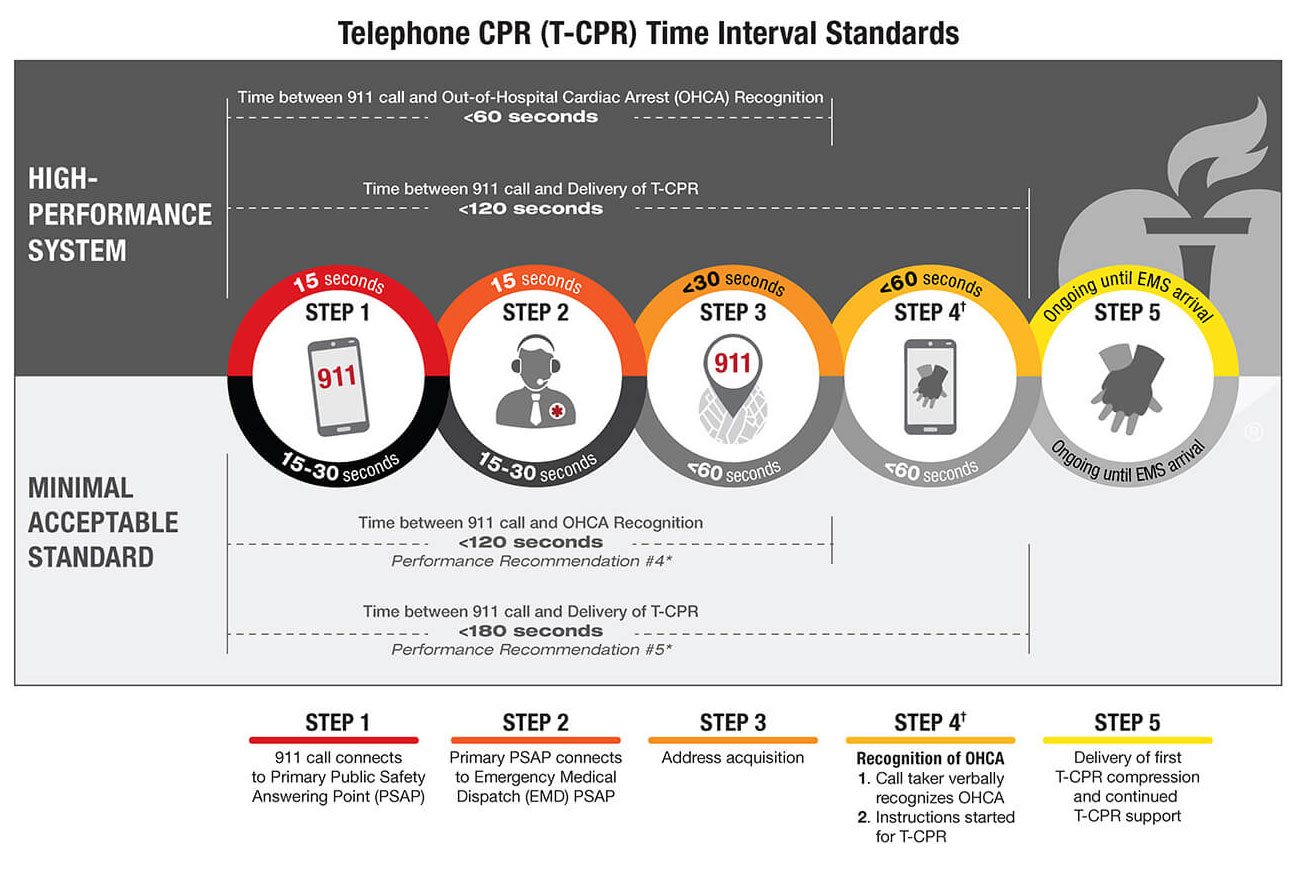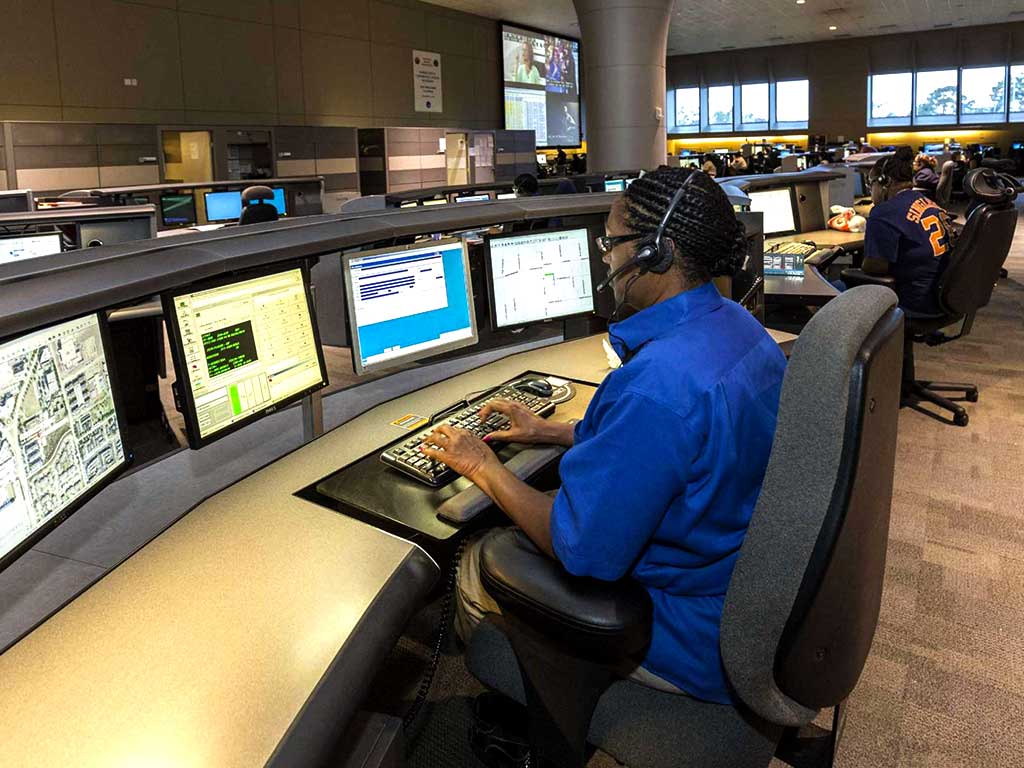For Healthcare Professionals
3. 911 Dispatch
Keep Calm with T-CPR
9-1-1 dispatch makes telecommunicator cardiopulmonary resuscitation (T-CPR) possible. With properly trained, calm, and assertive telecommunicators at the receiving end of an out-of-hospital cardiac arrest (OHCA) call, three things can happen:
- Callers can receive help to identify when a person is in cardiac arrest
- Callers can encounter clear instructions for delivering CPR
- Callers can benefit from coaching on how to continuously perform CPR until professional rescuers arrive
T-CPR has been shown to save lives across the world and is extremely cost-effective, requiring almost no capital expense. Texas-CARES can help assist 9-1-1 dispatch centers with critical resources for successful T-CPR implementation, including a robust data collection tool that allows performance monitoring on OHCA calls. Data can be used for consultation with individual providers on specific events and to identify staff-level patterns in care.
CPR LifeLinks serves as the Texas-CARES blueprint for supporting 9-1-1 centers with T-CPR. Published in 2019, the CPR LifeLinks quality improvement implementation toolkit responds to guidance from the 2015 IOM report “Strategies to Improve Cardiac Arrest Survival: A Time to Act” and represents expert consensus on best practice recommendations and guidelines for T-CPR training and implementation by 9-1-1 centers. Successful implementation of the toolkit’s T-CPR component will help 9-1-1 centers work toward a high-performance system according to recommended T-CPR standards by allowing them to:
- Know the evidence-based recommendations
- Practice CPR skills continuously
- Master three stages of T-CPR
- Simulate T-CPR
- Measure and improve performance.


